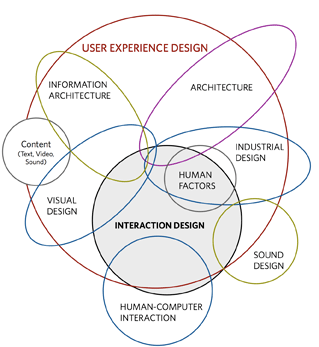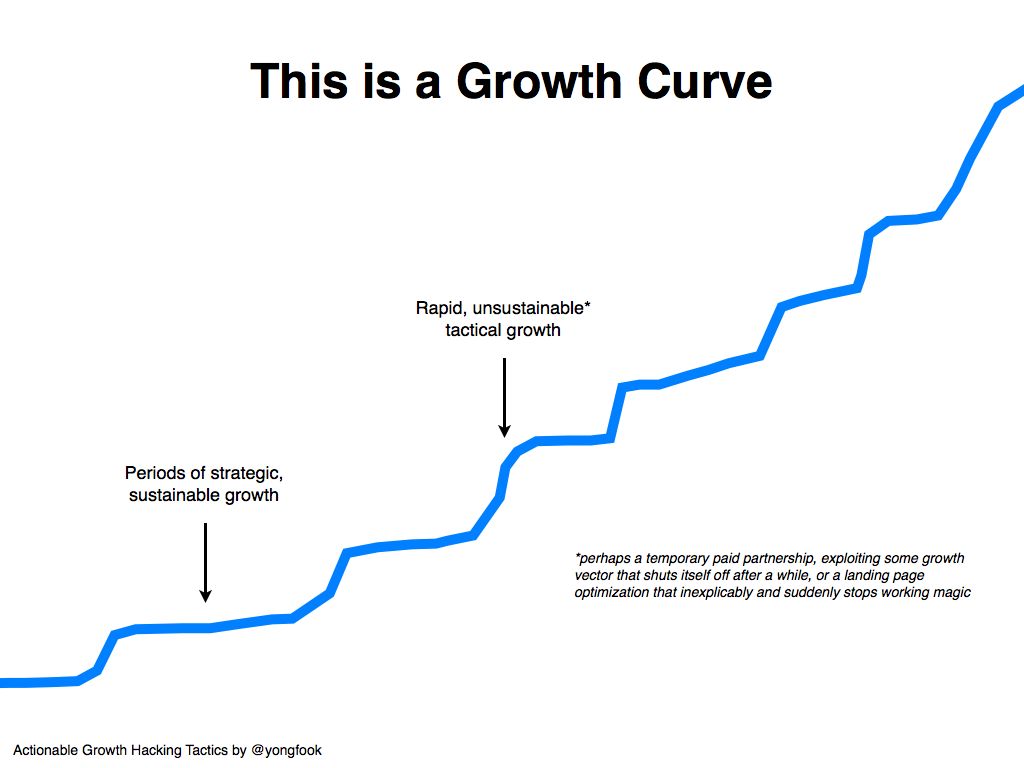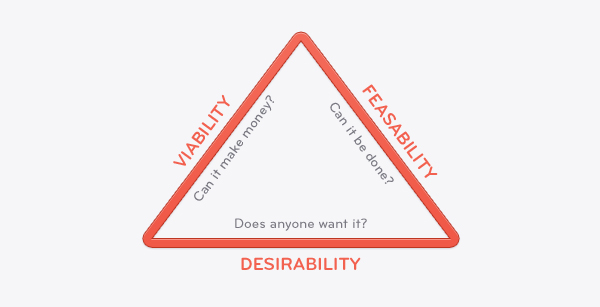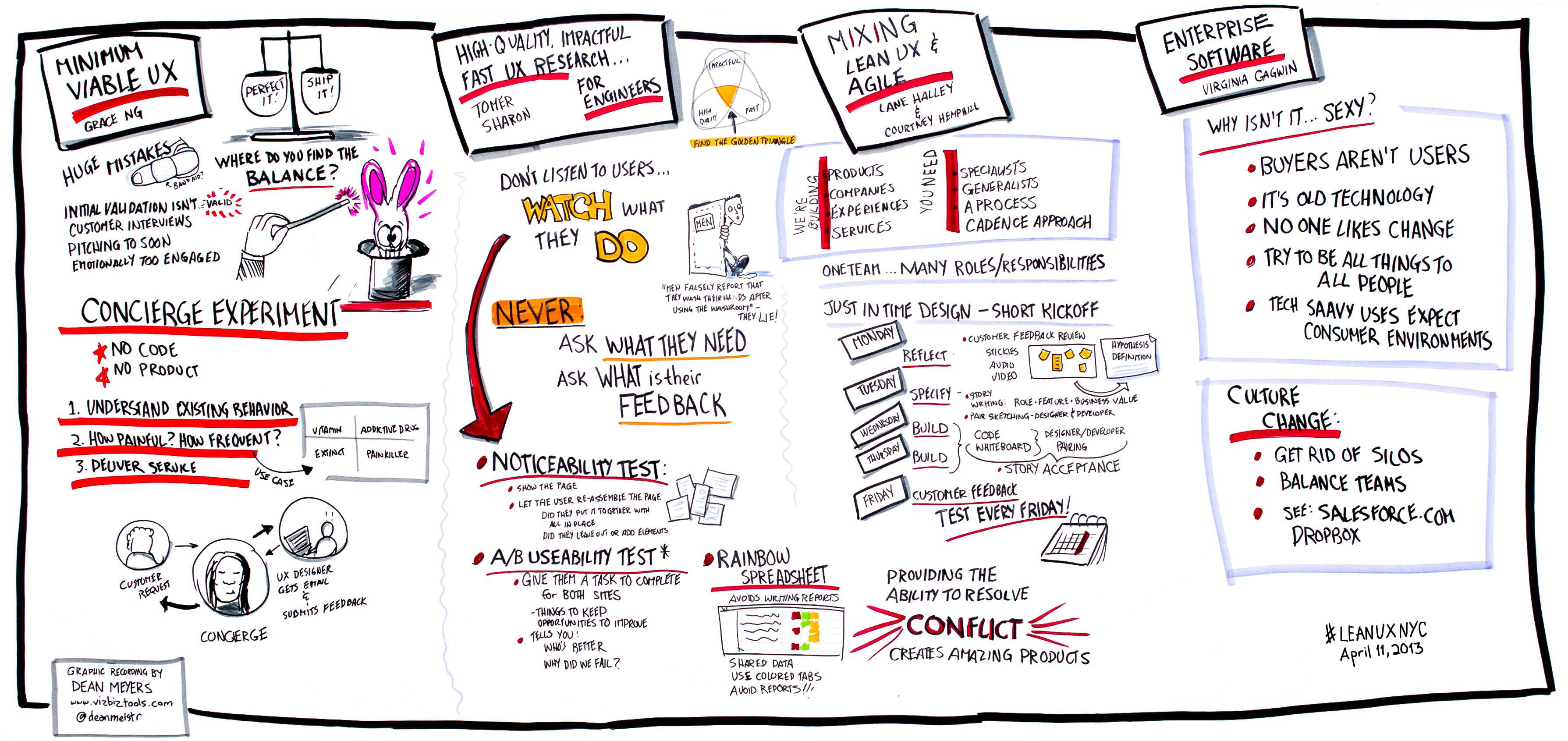What matters more: killer UX that makes people want to use your product, or shipping the things people want quickly and staking down a huge share of the market? If the UX is bad, people won’t want to use it. On the other hand, if someone else gets it there first, people are happy to use what is available and help to improve it with feedback as it grows. People have been struggling with these opposing interests long enough that we thought it important to outline a better way to think about the problem, depending on what stage your company is in.
It’s important to remember that this is only a framework and that your actual course of action will be as personal as your business and products. But if you’re simply trying to “wedge in” design excellence while rushing your product to market, then you’re already on the wrong path.
Competing Priorities: Experience vs. Execution
Experience
UX is absolutely critical, there’s no question about that. Q Manning at Code Mag sums up his thoughts on the matter rather well:
“Finding a well-developed app isn’t that difficult. Many low-rated apps are responsive and bug free. So what do these top apps all have in common?… The top-selling apps have a fantastic user experience. The best apps do more than accomplish their goals; they transport users into a preternatural state of clairvoyance, where each tap is intuitive and never requires second guessing.”
That sounds pretty sweet in theory, but UX rarely reaches that state of perfection. We debate this regularly at UXPin while reviewing UI designs, prioritizing features, planning the product roadmap, and so forth for our wireframing and prototyping app. UX involves how people use your product, what they experience when they do, and how they feel about those experiences. It’s such a broad definition that few companies think about it the same way—below, you’ll see one of the many convoluted UX frameworks that are freely available.
Source: Kicker Studio, “The Disciplines of User Experience”
Execution
The opposing interest is called, in the language of the Lean Startup model, the Minimal Viable Product (MVP). Lean product development instructs you to get a working prototype, ship quickly, get feedback, fix it, and do it again.
John Saddington, Partner at startup accelerator The Iron Yard, is a strong advocate of the MVP as a means of getting customer feedback as soon as possible. “Do whatever it takes to get something into someone’s hands. You’ll learn more from in-the-flesh customers than any degree of theorycrafting,” Saddington says. “That’s what an MVP is all about.”
It isn’t possible to comprehend what good UX means in your case until you have dedicated users
The simple fact is that it just isn’t possible to fully comprehend what good UX means in your particular case until you actually have some dedicated users. Get the basics, communicate your core concept and then get some fingers on the buttons. This is where setting user expectations matters most. If you just need some beta testers, don’t promote your MVP as a launch. You actually have more control over user expectations than you think. Many people are willing to try something new and clunky for the coolness factor alone.
Get Conceptual
However you look at it, you need something out there. And there are many ways to conceptualize your initial product. If you need to brush up, take a look into our free ebook, The Guide to Wireframing, and keep tabs on our Product Design Library for new e-books on prototyping and more.
I. Viable Business
Although there are MVP success stories like Dropbox, which used a bare bones approach to go from 0 to $1 billion in valuation over four years, an MVP more oftens lead directly to a Minimum Viable Business (MVB), which builds revenues and traffic more reliably yet slowly. Of course, this makes sense—most things of value in life come to fruition from steady effort over time. In fact, products that grow explosively like rocket ships are so rare that they’re commonly dubbed “unicorns” once they reach a certain level of traction. Regardless of whether your MVB is a rocketeering unicorn or a steady winner, the primary question you should ask yourself over and over again is: can it make money?
Source: Jon Yongfook, “21 Actionable Growth Hacking Tactics”
II. Feasible Product
As discussed in our Guide to MVPs, building an MVB is only part of the story. The next step up is making sure your product can be built with the time, money, resources, and technical capabilities today. It’s critical to be honest with yourself here because a lot of people grossly underestimate or flat out ignore this part. You can’t really move onto the next step without the product being feasible.
III. Desirable Product
Finally, your product has to be desirable, a Minimum Desirable Product (MDP). This concept was introduced by Andrew Chen, who defined it as, “the simplest experience necessary to prove out a high-value, satisfying product experience for users, independent of viability.”
Source: Intercom, “Asking Questions Beats Giving Advice”
Aarron Walter, Director of UX at MailChimp and author of Designing for Emotion, echoes a similar sentiment that UX is the key to desirability, even at the MVP stage. “At first, the primary focus is on usability and learnability. But these days, it’s easy to build an app and get it on the market,” says Walter. “What’ll make your app stand out from the crowd? Personality, a point of view, an ethos—features can come later, but personality needs to be there from your very first release.”
The guide below will help you safely navigate the waters of New Product Development, and provide advice on when to focus on UX or lean processes and to what degree at each stage of the process.
The Stages of Product Development
The most salient factor that determines how much to focus on UX or lean design is which stage you are currently in along the development cycle.
One unique aspect of the design process that can be frustrating is that it is path-dependent. Everything is open at the sketching stage, but after that, early decisions put constraints on what is possible later in development. Unless the team is going to scrap everything and start from scratch, which is not always desirable—or even possible—additions have to blend in to the existing design. Reduce your uncertainty early for a more successful project all around.
This implies a strategy of reducing the project scope so that all of your resources can be devoted to solving a problem that is fairly well understood. Design simply, get it right, and move on. You are not shooting for perfection, but a high-functioning product that you can refine and enhance the core of in the next stages of design and development. Laura Klein, VP of Product at Hint Health, warns against losing focus with your MVP. “An MVP is not an excuse for a crappy product,” she says. “MVPs are all about learning, and you don’t learn anything from a crappy product except that people don’t like crappy products.”
With that said, here is a brief breakdown of the three market stages and where your focus needs to be.
I. The technology stage: little UX, all lean
- Objective: Assembling the plan together as a team and figuring out what the market needs.
- Key considerations: Focus on MVP, with an emphasis on the Viable. You can’t focus on UX yet because you don’t have any users. You know who could use it, but you don’t know who will. Get a working prototype together and get it out there to find out who needs it and how they are using it in the real world.
- Success criteria: Consumers outside the beta test group want to use it.
II. Feature stage: limited UX, less lean
- Objective: Settle on the most important features to develop based on existing and/or prospective user demand.
- Key considerations: Start molding the UX as part of the decision process to engender specific emotional responses from users. Do you want them to feel confident, curious, and hungry for more? Keep a close eye on what features competitors offer, but don’t be in a hurry to get anything out the door until the product works properly with the right UX.
- Success criteria: Users comment about how they are using it and how they feel about it.
III. Experience stage: all UX, no lean
- Objective: Research on what users are doing with your product means everything at this point.
- Key considerations: Forget about adding features unless they are absolutely necessary. What are the biggest pain points customers have when using your product? How much trouble would it be for them to switch to a competitor now? This is a good time to study winning UX designs from around the world and figure out how to apply these insights to your product. The Hierarchy of Efforts is a great way to structure your UX improvements at this point.
- Success criteria: Unsolicited customer referrals and viral adoption.
At UXPin, our wireframing and prototyping app is admittedly still at Stage II in this process. That said, we have done a lot of customer development and dramatically improved our core product recently to create a more complete and enjoyable experience. Soon we’ll be ready for Stage III, optimizing UX, and that will be a really exciting time for us—and our users.
UX Design vs. Lean Design
These two opposing forces really aren’t all that different from one standpoint: the user is driving the process, so the sooner you get on board with their needs, the more successful your product will be. Nobody cares that your product can do a million things and more. They only care if it works for them when they open the box.
Here is a rough rundown of what each process looks like for designing a new app.
Example of a UX Design Process
- Identify people, a problem, and a project: People need an app that turns a week of recipes into a shopping list instantly.
- Analyze your users and competition: Do some competitive analysis and create personas and experience maps to figure out exactly where the shopping app fits into the mind and market.
- Design: This is where UX and creativity are formalized. The shopping app will start to take shape as it moves from a rough sketch to a wireframe or low fidelity prototype. Polish up the look and feel and the final state will be a high fidelity prototype.
- Get Buy-in: Gather stakeholders and measure the excitement. This is the most undervalued stage and the point where products go bad due to lack of backing or not listening to users. Ideally, this should be happening between each stage.
Example of a Lean Design Process
- Observe and Brainstorm: People shop by category (dairy, meats, vegetables) and make meals out of what is available. An ingredient focus can change the shopping experience.
- Minimal Viable Product: Get feedback from a user test group on a bare bones recipe-to-shopping-list converter app.
- Gather feedback and iterate: Maybe the shopping list isn’t the problem, it’s finding recipes easily based on lifestyle choices. Find out where the real problem lies and start over from there.
According to Jan Jursa, author of UX Storytellers and cofounder of MOBX Conference, the more mature the market in which your product is launching, the more you’ll want to lean on a UX design process. He believes that going MVP is not an invitation to skimp on fundamental product qualities. “Universal principles of design have been around for a long time and they are here to stay. If you think your next killer app can do without, think again,” Jursa says. “Elements such as harmony and hierarchy are an investment in the perceived experience of every product, as is usability.”
Stay Lean … With Your Eye On UX
Lean UX is gaining currency in the design world as companies try to fold the two approaches together seamlessly.
Source: Dean Meyers
The first key to achieving that balance in the real world is to keep UX as a goal at every stage of design and development, even when the focus is on getting the product into users hands. That way, when UX becomes more important, the design can easily incorporate the necessary changes.
The second key is more feedback from all stakeholders. That doesn’t mean try to please everyone, but it does mean that the funding sources and management team are just as valuable a resource as the users when it comes time for implementation.
Frank Lloyd Wright probably said it better than anyone: “You can use an eraser on the drafting table or a sledge hammer on the construction site.” It is far more effective to use an eraser early because customers don’t really appreciate it when you take a sledgehammer to what they see as “their” website. Launch with the most optimized site that you can and iterate from there to improve rather than overhaul. Your site is not carved in stone. It should evolve and change based on how users want to use it and the potentials unleashed by new technology.
Additional thoughts are included in the Guide to MVPs, which includes expert advice from UX folks like Brandon Schauer, Stephen P. Anderson, and others as well as analysis of MVPs from over 20 companies including AirBnB, Dropbox, Twitter, and Zappos.
Image of Frank Lloyd Wright’s Solomon R. Guggenheim Museum courtesy Jorg Hackemann/Shutterstock.











